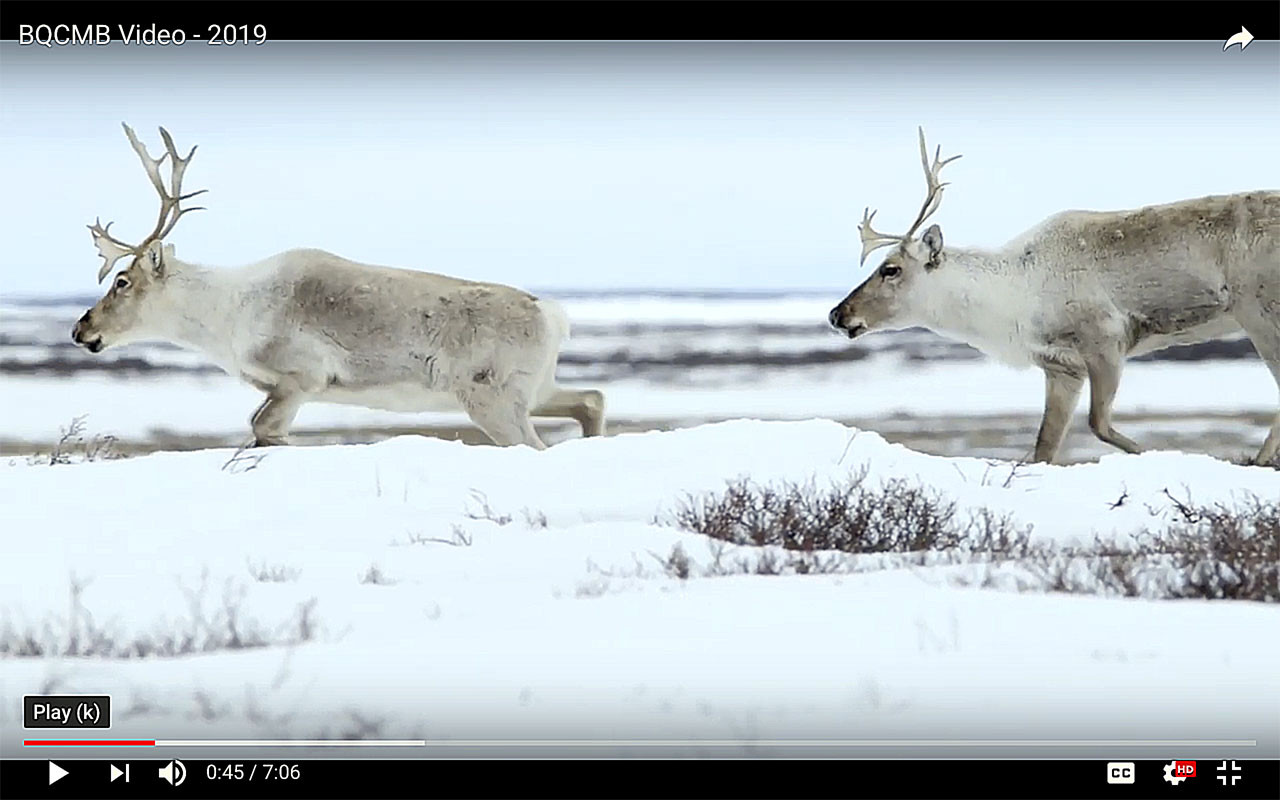Cross-boundary caribou board releases educational video
Beverly and Qamanirjuaq Caribou Management Board represents Cree, Dene, Inuit and Métis
This is a screen shot from a video that the Beverly and Qamanirjuaq Caribou Management Board has just released.
Have you ever wanted to learn more about the Beverly and Qamanirjuaq Caribou Management Board?
If so, you’ll be interested to know that the caribou board has just released an educational video aimed at explaining its work.
The board, created in 1982, brings together people from Cree, Dene, Inuit and Métis communities in Manitoba, Saskatchewan, the Northwest Territories and Nunavut.
It’s the first co-management board of its type in North America and makes recommendations to the governments of those four jurisdictions on the protection and conservation of the Beverly and Qamanirjuaq caribou herds.
They hope the video will help persuade governments that the caribou board should continue to function.
“With our current 10-year agreement expiring in less than three years, we are ramping up our efforts to inform our government partners, and others, that it is essential that this board continue,” Ross Thompson, the caribou board’s executive director, said in a news release.
The caribou board says it wants to avoid the precipitous crash that has afflicted the Bathurst caribou herd, which ranges to the west of the Beverly and Qamanirjuaq herds.
Over the past three decades, the Bathurst herd has decreased from 470,000 animals to only 8,000.
The Beverly and Qamanirjuaq herds are healthier, but still declining.
The population of the Qamanirjuaq herd, whose range takes in the Kivalliq region of Nunavut, fell to 288,200 in 2017 from 496,000 in 1994.
And the population of the Beverly herd fell to 103,400 in 2018 from well over 200,000 in 1994.
Earl Evans of Fort Smith, N.W.T., the chair of the caribou board, said losing access to caribou would be a major cultural shock for the affected communities.
“When there’s caribou, people are out there living their lifestyle that they always knew. The cultural value of the caribou to those people is of utmost importance, and we can’t overlook that,” Evans said.





(0) Comments